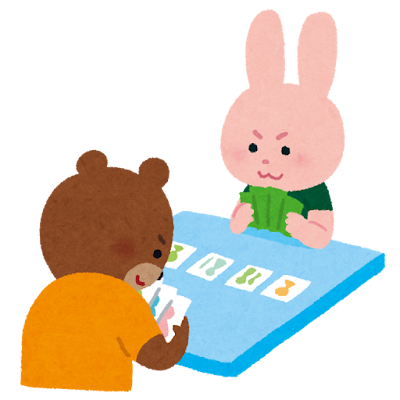Japanese Level 1, Activity #10: “Two Truths and One Lie” / “二つ本当と一つ噓” (Online)

Image via Irasutoya
Truth, Lie, False, Right, Trivia, 本当, 嘘, 偽, 右, トリビア, Xがあります/います, Describing Where Things Are, 物がどこにあるかを説明する, Past Tense of です, ですの過去形, Past Tense of Verbs, 動詞の過去形, も, 一時間, たくさん, と
Products: vocabulary, facts about Japan
Practices: trivia, games
Perspectives: The differences between Boise and Japan
NCSSFL-ACTFL World-Readiness Standards:
- Standard 1.1: Students engage in conversation, provide and obtain information, express feelings and emotions, and exchange opinions.
- Standard 1.2: Students understand and interpret written and spoken Japanese on a variety of topics.
Idaho Content Standards for World Languages:
- COMM 1.1: Interact and negotiate meaning (spoken, signed, written conversation) to share information, reactions, feelings, and opinions
- COMM 2.1: Understand, interpret, and analyze what is heard, read, or viewed on a variety of topics.
NCSSFL-ACTFL Can-Do Statements:
- I can say whether something is true or false after hearing a statement about a place.
- I can share things I own and people I know with peers.
Warm-Up:
For this activity, students will be shown a series of trivia statements about Boise State and Japan. They will need to decide if the statements are true or false.
この活動のために、学生はボイジー州立大学と日本についての豆知識を見せられます。彼らは、ステートメントが本当かどうかを決める必要があります。
Instructions:
Show the first statement slide and model the response as an example.
最初のトリビアのスライドを見せて、例として答えてください。
Go to the next slide and ask students to decide whether they think the statement is true or false. Have them answer all together as a group.
次のスライドに進んで、生徒にその文が正しいかどうかを判断させてください。グループで答えてもらいます。
- 例:ボイシは海岸がありますか?
- A:はい、ボイジは海岸があります。
- B:いいえ、ボイシは海岸がありません。
Continue through the remaining warm-up slides then move on to the main activity.
残りのウォームアップのスライドを続行してから、メインアクティビティに進んで下さい。
Main Activity:
For this activity, students will play two truths and a lie.
この活動は2つの真実と1つの嘘と言うゲームです。
Start by modeling the game with your students.
生徒と一緒にゲームをやって下さい。
Share two truths and a lie about yourself.
自分自身についての2つの真実ことと1つの嘘を伝えて下さい。
One by one, ask the students to guess the lie. Have them reply by negating the statement they think is a lie.
一人ずつ、何が嘘かを推測するように聞いて下さい。答えるために、噓だと思っている文を否定させて下さい。
Go around the group until everyone has answered and then reveal the lie.
- 例:家に柴犬がいます。卵が好きです。雨が好きです。Aさんはどちらが嘘だと思いますか?
- A:しばいぬがいません。
- Bさんはどうでしょうか?
- B:たまごがすきじゃないです。
- Cさんは?
- C:あめがすきじゃないです。
- Bさんの言う通りです。卵が好きじゃないです!
Now the students will take their turns.
今、学生は順番を取ります。
Give the students 2 minutes to write down their two truths and a lie.
生徒は2分で2つの真実ことと1つの嘘を書き留めさせて下さい。
One by one, have students share their three statements and ask their peers to guess the lie.
一人ずつ、学生に彼らの3つの書いたことを読んで、他の学生が推測ように招いて下さい。
Continue until everyone has shared their statements or until there is one minute left of the lab.
全員がステートメントを読んだまで、又はラボの残り時間が1分になるまで続いて下さい。
WRAP UP:
Have each student try to remember a fact about one of their peers in Japanese.
各生徒に、仲間の一人についての事実を日本語で思い出してもらいます。
End of activity:
- Read Can-Do statements once more and have students evaluate
their confidence. - (Use thumbs up/thumbs down or download our student cards.)
- Encourage students to be honest in their self-evaluation.
- Pay attention, and try to use feedback for future activities!
NCSSFL-ACTFL Can-Do Statements:
- I can say whether something is true or false after hearing a statement about a place.
- I can share things I own and people I know with peers.

